Table Of Contents
Introduction
In today’s competitive higher education landscape, institutions must go beyond traditional outreach to attract, engage, and enroll top talent. That’s where Slate CRM by Technolutions comes in—a cutting-edge, all-in-one platform designed specifically for colleges and universities to manage admissions, communications, recruitment, events, application review, and analytics in one unified system.
As of 2025, over 2,000 colleges and universities trust Slate to Power their admissions, Student Success, and advancement operations. Additionally, more than 1,600 institutions worldwide, including Ivy League and globally ranked universities such as Harvard, Stanford, and NYU, trust Slate to streamline their admissions and enrollment operations. Public-facing portals from institutions such as Harvard College, NYU, and Stanford confirm active use of Slate-hosted systems.
Slate empowers universities with tools for automated email/SMS campaigns, real-time dashboards, AI-assisted workflows, and customizable applicant portals. According to user data shared at the Slate Innovation Summit, institutions implementing Slate have reported up to 30% higher applicant engagement and 25% faster admissions decisions, thanks to automation and centralised data management.
Whether you’re looking to modernise your outreach or personalise the student journey, Slate CRM is transforming the future of higher ed admissions—one click at a time.
What is Slate.org?
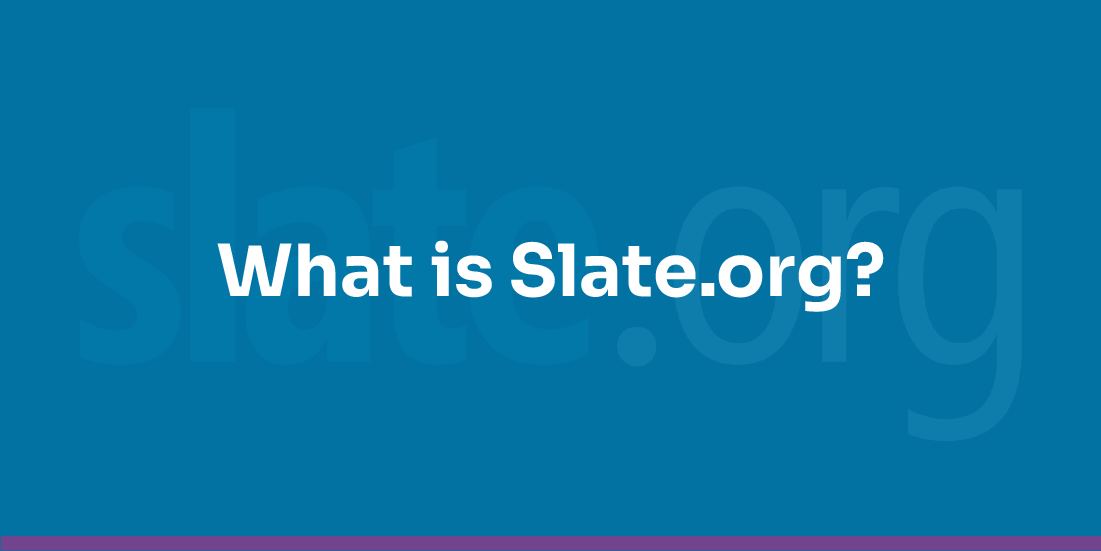
Slate.org is a free platform created by Technolutions (the same company behind Slate CRM) that connects college admissions offices, school counsellors, and students to foster transparent, efficient, and collaborative communication throughout the admissions process.
Who is Slate.org for?
| User Type | Purpose |
| High School Counsellors | Track students’ application statuses, submit documents, and communicate with college admissions officers |
| College Admissions Staff | Share real-time decisions, status updates, and receive documents directly from schools |
| Students (coming in more advanced versions) | Collaborate with counsellors and track document submissions indirectly |
Let’s know some key Features & Uses:
Application Management
Manage application submissions, materials, decisions, and status tracking in one place. With Edmo’s Document Intelligence, universities can reduce staff manual effort by 40%. It makes document handling faster and easier.
Automated Communications
Send personalised emails, texts, and drip campaigns using merge fields and rules. EDMO’s Conversation Intelligence uses AI chatbots and voice assistants to deliver real-time, personalized support across channels, handling admissions, financial aid, and more to enhance student experience and efficiency.
Advanced Reporting & Analytics
Build custom dashboards and generate reports to track recruitment goals and applicant trends.
Event Management
Organise campus visits, interviews, webinars, and send automatic confirmations and reminders.
Workflow Automation
Set rules for application status updates, task assignments, and communications based on user behaviour.
Dynamic Forms & Surveys
Collect data with drag-and-drop form builders for feedback, RSVPs, and more.
Customizable Portals
Applicant, recommender, and reviewer portals are tailored for different user experiences.
Reader Review System
A dedicated tool for admissions committees to evaluate, comment, and score applications.
Top Benefits of Using Slate CRM
Slate CRM, primarily used in higher education, offers several benefits, including streamlined recruitment, personalised communication, and efficient data management. It provides a unified platform for managing prospective students, applications, and communications, resulting in increased efficiency and enhanced student engagement.
Here’s a more detailed breakdown of the benefits:
For Institutions:
Consolidated Information:
Slate serves as a central hub for student data, eliminating the need to switch between different systems for recruitment, admissions, and student information management.
Improved Recruitment:
Slate’s tools enable institutions to personalise communications, track interactions, and manage applications, ultimately leading to a more effective recruitment strategy.
Efficient Application Processing:
Slate streamlines the application process for both students and admissions staff, enabling faster processing and a reduced administrative burden.
Enhanced Communication:
Slate offers a range of communication tools, including email, texting, and phone integration, enabling institutions to engage with students effectively.
Data-Driven Insights:
Slate’s reporting and analytics capabilities offer valuable insights into recruitment efforts, enabling institutions to pinpoint areas for improvement and refine their strategies.
Scalability:
As a cloud-based platform, Slate can scale with the institution’s needs, accommodating growth and evolving requirements.
Customization:
Slate enables customisation to meet the unique needs of each institution, including the creation of custom fields, forms, and workflows.
For Students:
Personalised Experience:
Slate enables institutions to tailor communication and provide a personalised experience for each student.
User-Friendly Interface:
Slate’s intuitive interface enables students to easily navigate the application process, access information, and interact with the institution.
Convenience:
Students can access information and complete tasks through a single platform, streamlining their experience.
Transparency:
Slate provides students with clear information about their application status, post-admit checklists, and other essential details.
In essence, Slate CRM helps institutions enhance their recruitment, streamline processes, and improve the overall student experience, while also providing valuable data-driven insights for informed decision-making.
How Universities Are Using Slate CRM: Real Examples That Drive Results
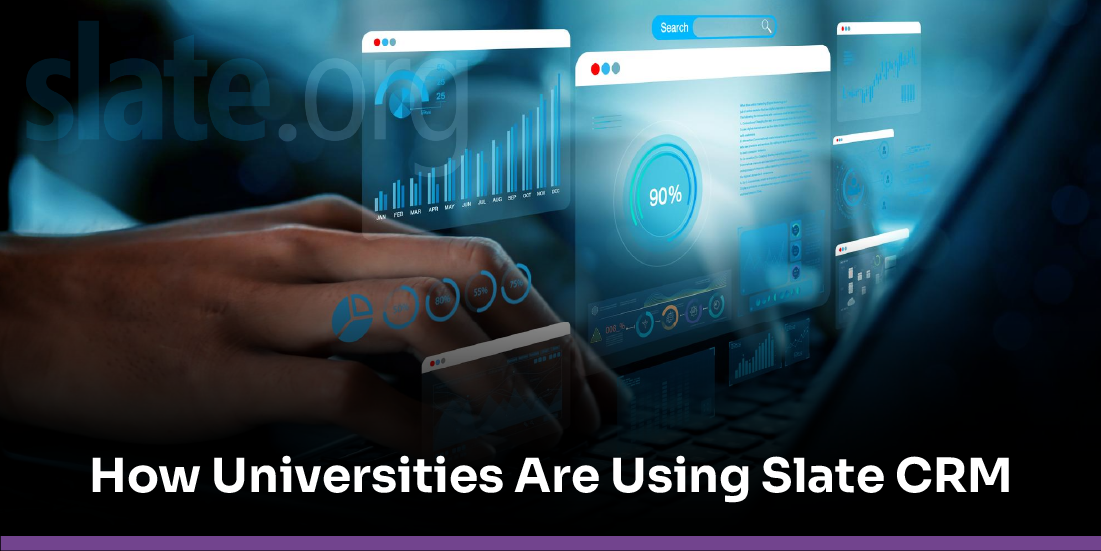
Slate by Technolutions is a cloud-based CRM built specifically for higher education. Trusted by over 2,000 colleges and universities, including 48 of the top 50 U.S. universities, it manages the entire student lifecycle—from recruiting and admissions to retention and alumni relations.
1. Centralising Applicant Data & Communication
- Institutions import all prospect and applicant information—including emails, test scores, transcripts, and event attendance records—into a single, unified system.
- For example, in 2017, Slate processed 1.6 billion emails and 7 million text messages, helping admissions offices send targeted communications based on location, interest, and behaviour.
2. Automating Campaigns & Comms
- Offices can design automated, multi-channel campaigns (email/SMS/print) that trigger based on applicant milestones, such as reaching the “submitted” status or missing required documents.
- At Oregon State University, automated sequences improved admission processing and real-time communication, using Slate’s audience filters and send automation.
3. Querying & Reporting Dashboards
- Use Slate’s Query Builder and Data Explorer to create real-time dashboards—tracking funnel conversion, event attendance, device usage, and geographic trends.
- Custom reports can reveal KPIs like open rates, clicks, and conversion rates. One partner noted that campaign-level analytics empower ongoing optimisation.
4. Forms, Events & Portals
- Build dynamic application forms, event registrations, and student portals using Slate’s drag-and-drop interface—no coding required.
- For example, query bases can be customised per team (first-year, graduate, transfer), ensuring relevant filters and data access.
- Prospect portals (e.g., Beaver Basecamp at OSU) enable students to track their progress and upload documents, providing a better user experience.
5. Integrations & Behavioural Data
- Slate integrates with SIS platforms (Banner, PeopleSoft), SMS gateways, payment systems, and chatbot systems—all without requiring additional licenses.
- Partnerships like Capture Higher Ed push engagement analytics into Slate, enabling behavioural scoring that can boost applications by ~20%.
6. Student Success & Retention
- Slate extends beyond admissions—supporting advising, early alerts, retention workflows, and communication tools.
- For example, at one university, advisors use Slate to track food insecurity surveys, then trigger messages with local resources—all from within the platform.
7. AI‑Enabled Efficiency
- Slate includes AI features such as predictive insights, natural language queries, and AI-generated content/rules to optimise workflows.
- Tasks such as writing decision letters, filtering queries, or generating dashboard summaries can now be assisted by AI, delivering productivity gains.
How to Design Student Inquiry Forms That Actually Convert
In the world of higher education, your lead generation form is often the first point of contact between your institution and a prospective student. But let’s be honest—no one likes long, tedious, or confusing forms. The most effective lead forms are concise, innovative, and strategic. They gather the correct data without overwhelming the user, and most importantly, they spark engagement.
According to a study by Formstack, reducing the number of form fields from 11 to 4 can increase conversion rates by up to 160%. That’s the power of an optimised student inquiry form.
Best Practices for Lead Generation Forms
Keep Forms Short & Simple
- Limit fields to only what’s essential—typically name, email, and program of interest—to reduce friction. Each extra field can drop conversion rates by 20%.
- HubSpot research shows that cutting the form length from four fields to three improved conversion by 50%.
Use Multi-Step (Progressive Profiling)
- Instead of one long form, break it into sequential steps where each asks one question at a time (“What’s your area of study?” → “What’s your level?” etc.).
- This builds micro-commitment and engagement—platforms have seen conversions as high as 60–70% using this format.
Apply Conditional Logic
- Show only relevant fields based on prior answers (e.g. if someone selects “Undergraduate”, only show related questions).
- This keeps the form clean, context-sensitive, and quicker to complete.
Optimise for Mobile & Use Single‑Column Layout
- Mobile users expect smooth scrolling and big tappable elements. A one-column form with large buttons reduces errors and improves usability.
- Mobile-optimised lead forms often convert at rates between 5% and 18%, compared to less consistent desktop performance.
Use Smart Defaults & Auto‑Fill
- Pre-fill obvious fields like country or city when possible (e.g. via IP geolocation), to reduce user effort.
- Use browser auto-fill hints to streamline input.
Strong, Clear CTAs and Design
- Use compelling button text like “Download Program Guide”, “Request Info”, or “Schedule Tour” instead of vague “Submit”.
- Use branded colours, whitespace, and clear visual hierarchy to make the form inviting.
Highlight Security & Privacy
- Use the HTTPS protocol and display a brief privacy notice or link to your policy to build trust.
- Transparency about how data will be used boosts comfort in submitting personal information.
Integrate with CRM & Automation Tools
- Forms should integrate directly into your CRM or student recruitment platform for immediate follow-up and segmentation.
- Automate email/SMS responses to confirm receipt and nurture leads. Speed matters: contacting a lead within 5 minutes can boost qualification odds by 80%, and responding in the first minute can increase conversions by nearly 391%.
A/B Test Continuously
- Test variations in form length, CTAs, layout, colour, and placement to find the highest-performing combination.
- High-performing organisations run 30+ tests monthly.
Segment Leads & Personalise Next Steps
- Capture program interest or geographic location early, then segment follow-ups accordingly.
- Tailored messaging significantly enhances engagement and conversion rates.
Use Multi‑Touch Engagement
- Don’t rely solely on form submissions. Combine with chatbots, social media, downloadable resources, referrals, and follow-up touchpoints.
- Students who touch the institution through multiple channels are 85% more likely to enrol.
Leverage Chatbots & Interactive Engagements
- Real-time chatbots can instantly answer FAQs, guide users to the correct form, and book campus tours, thereby reducing drop-offs.
- Quizzes like “What program fits you best?” can capture prospects via engagement and value exchange.
- Similarly, Conversation Intelligence revolutionises student interactions through AI-powered chatbots and voice assistants. These tools offer real-time, personalised support across multiple channels, from admissions inquiries to financial aid guidance.
Summary
Think admissions can’t be smart, sleek, and seamless? Think again. Slate CRM is the secret sauce behind how top universities—from Harvard to Stanford—are winning over students. It’s not just a tool, it’s a game-changer. Whether it’s powering fast, AI-backed decisions or making student journeys feel personal from the first click, Slate is where strategy meets simplicity. Schools are ditching clunky systems for one platform that does it all—email campaigns, real-time dashboards, lead forms that actually convert, and portals students love. With Slate, colleges don’t just keep up—they lead. It’s not CRM, it’s campus relationship magic.

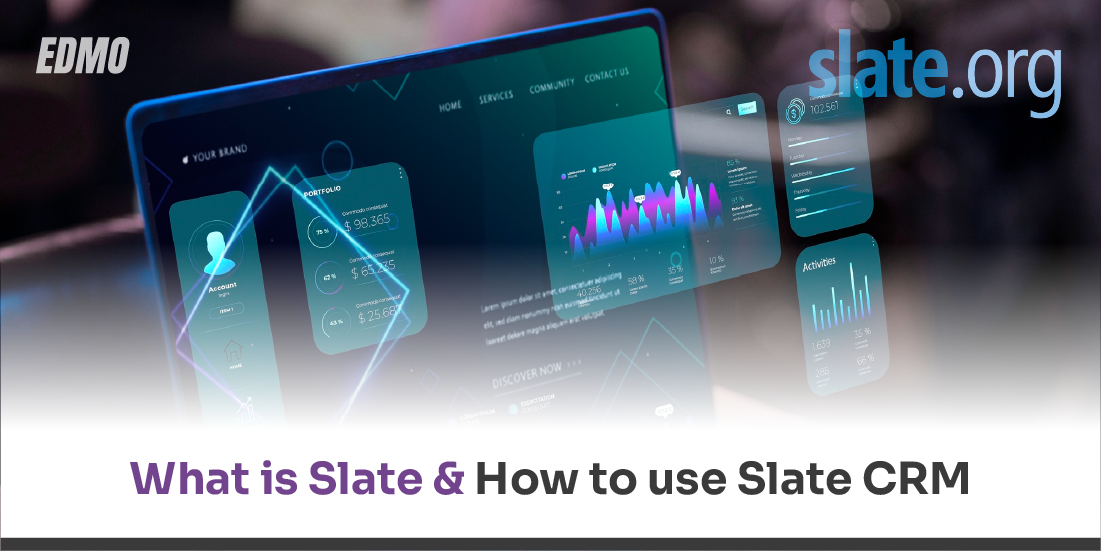
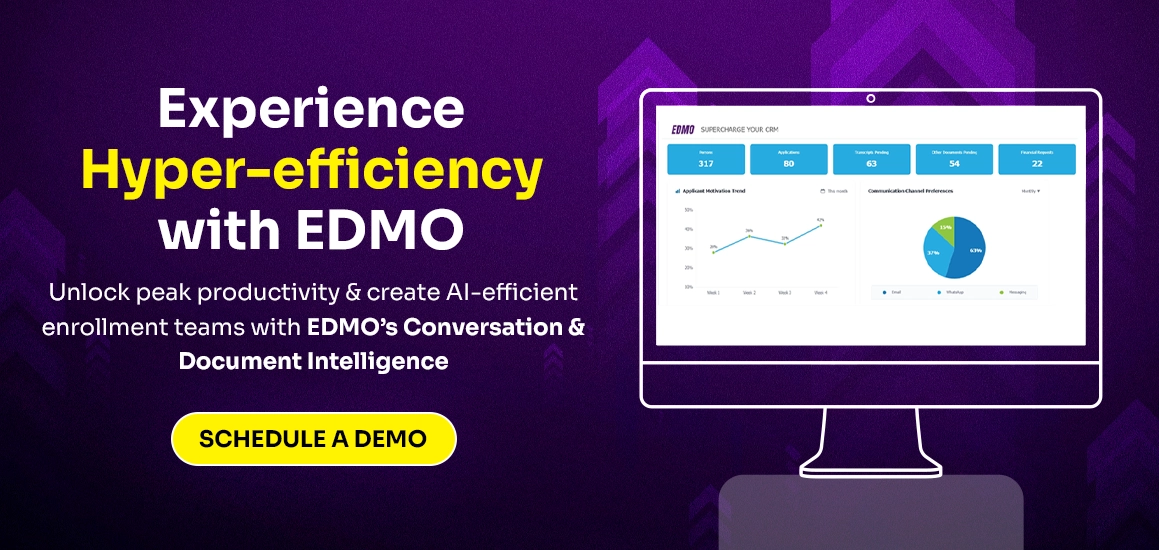





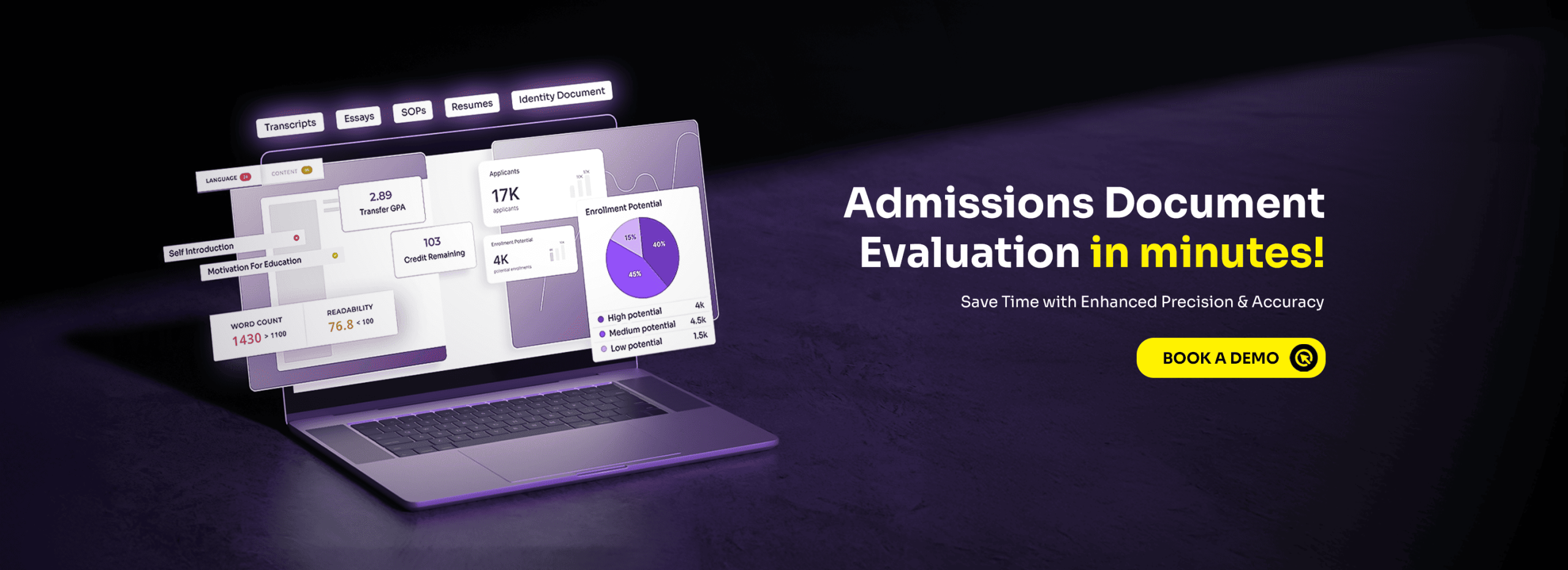

No comments yet. Be the first to comment!
Leave a Comment